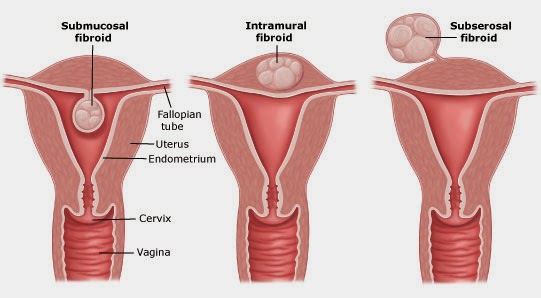Complete Guide to Fibroid Removal Surgery: Cost and Procedure
Fibroids, also known as uterine leiomyomas, are non-cancerous growths that can develop in the uterus. While many women experience no symptoms, others may face complications like heavy menstrual bleeding, pain, or fertility issues. Fibroid removal surgery, or myomectomy, is often recommended to alleviate these symptoms.
If you’re considering fibroid removal, it’s essential to understand the costs, procedure options, and potential outcomes. This guide will walk you through everything you need to know about fibroid removal surgery.
Get in touch for a Free Surrogacy Consultancy:
📲 +91-8800481100 ( WhatsApp, Line, Viber)

What Are Uterine Fibroids?
Uterine fibroids are benign tumors that grow in or on the walls of the uterus. They can vary in size, number, and location, leading to different symptoms depending on their position.
Common symptoms include:
- Heavy menstrual bleeding
- Pelvic pain
- Frequent urination
- Fertility issues
- Constipation
Fibroid removal surgery is typically recommended when these symptoms significantly impact a woman’s quality of life.
Types of Fibroid Removal Surgery
There are several surgical options available for fibroid removal, depending on the size, number, and location of the fibroids, as well as the patient’s fertility goals.
-
Myomectomy
- Description: This procedure involves removing the fibroids while preserving the uterus. It’s an excellent option for women who want to maintain their fertility.
- Types of Myomectomy:
- Hysteroscopic Myomectomy: Performed through the vagina using a hysteroscope for small fibroids inside the uterine cavity.
- Laparoscopic Myomectomy: A minimally invasive surgery done using small incisions and a camera to remove fibroids on the uterine surface.
- Abdominal Myomectomy: An open surgery performed through a larger incision in the abdomen for larger or more numerous fibroids.
-
Hysterectomy
- Description: In cases where fibroids are severe or fertility is not a concern, the removal of the uterus may be recommended.
- Types:
- Total Hysterectomy: Removal of the uterus and cervix.
- Partial Hysterectomy: Removal of just the uterus, leaving the cervix intact.
- Fertility Impact: This procedure ends a woman’s ability to become pregnant.
-
Uterine Fibroid Embolization (UFE)
- Description: A non-surgical, minimally invasive procedure that cuts off the blood supply to fibroids, causing them to shrink.
- Fertility Impact: UFE may affect fertility, but some women have successfully conceived after the procedure.
-
MRI-Guided Focused Ultrasound (MRgFUS)
- Description: A non-invasive treatment that uses MRI to locate fibroids and high-intensity ultrasound waves to shrink them.
- Fertility Impact: MRgFUS preserves the uterus, but its long-term impact on fertility is still under study.
 Fibroid Removal Surgery Cost Breakdown
Fibroid Removal Surgery Cost Breakdown
The cost of fibroid removal surgery can vary widely depending on several factors, including the type of surgery, hospital facilities, geographical location, and whether the patient has insurance coverage. Here’s a breakdown of common costs associated with fibroid removal procedures:
| Procedure | Cost Range (USD) | Description |
| Hysteroscopic Myomectomy | $3,000 – $7,000 | For small fibroids located inside the uterus. Outpatient procedure. |
| Laparoscopic Myomectomy | $7,000 – $12,000 | Minimally invasive with a shorter recovery time. |
| Abdominal Myomectomy | $9,000 – $15,000 | Open surgery for larger or multiple fibroids. |
| Hysterectomy | $10,000 – $20,000 | Includes complete or partial removal of the uterus. |
| Uterine Fibroid Embolization (UFE) | $5,000 – $11,000 | Minimally invasive, non-surgical procedure. |
| MRI-Guided Focused Ultrasound (MRgFUS) | $5,000 – $10,000 | Non-invasive and requires no surgery. |
Additional Costs:
- Pre-Surgery Consultations: $100 – $300
- Diagnostic Imaging (e.g., MRI, Ultrasound): $300 – $2,000
- Anesthesia Fees: $600 – $1,500
- Hospital Stay (if needed): $1,500 – $5,000 per day
- Post-Surgery Medication and Follow-Up: $200 – $1,000
Factors Influencing the Cost
- Type of Surgery: Minimally invasive procedures tend to be less expensive than open surgeries. Additionally, non-surgical options like UFE may cost less than a full myomectomy or hysterectomy.
- Geographical Location: The cost of healthcare varies significantly by region, with urban centers often charging more than rural areas.
- Insurance Coverage: Depending on your insurance provider, some or all of the costs may be covered if the surgery is deemed medically necessary.
- Hospital and Surgeon Fees: The choice of hospital and surgeon can also impact the overall cost. High-end facilities and experienced surgeons tend to charge more.
How to Prepare for Fibroid Removal Surgery
- Medical Evaluation: Ensure all diagnostic tests (ultrasounds, MRI) are completed before surgery.
- Insurance Check: Confirm what your insurance covers and whether you need to pre-authorize the surgery.
- Pre-Surgical Instructions: Follow any pre-surgery guidelines provided by your doctor, which may include fasting and stopping certain medications.
- Post-Surgery Care: Arrange for a support system during your recovery period, particularly for surgeries that require a hospital stay.
Recovery Process
Recovery times vary depending on the type of surgery:
- Hysteroscopic Myomectomy: Minimal recovery time; most patients can resume normal activities within a week.
- Laparoscopic Myomectomy: Typically requires 2 to 4 weeks of recovery.
- Abdominal Myomectomy: Full recovery may take 6 to 8 weeks.
- Hysterectomy: Full recovery ranges from 6 to 12 weeks, depending on the type of hysterectomy.
- UFE and MRgFUS: These non-invasive procedures generally have a faster recovery time of 1 to 2 weeks.
Risks and Complications
Though fibroid removal surgery is generally safe, there are some potential risks, including:
- Infection: Any surgery carries a risk of infection, especially if performed through an open incision.
- Bleeding: There may be excessive bleeding during or after the procedure.
- Scar Tissue: In some cases, surgery may lead to the formation of scar tissue in the uterus, which can affect future fertility.
- Fertility Concerns: Depending on the type of procedure, fertility may be impacted. It’s essential to discuss this with your doctor if you plan on having children in the future.
 What are the risks of fibroid removal operation?
What are the risks of fibroid removal operation?
-
Infection after the surgery.
-
Blood clots in the legs or lungs. It is advised to have adequate rest and a small walk in between.
-
Scar tissue (also called adhesions) that can cause pelvic pain and infertility.
-
Injury to other organs, such as the bladder or bowel.
-
A collection of blood at the surgical site.
-
Continued heavy bleeding.
Postoperative care of fibroid removal surgery
Typically, the woman requires about 4 to 6 weeks to fully recover. The doctor advises not to lie heavy objects during the recovering as it might make it difficult for wound and incision to heal. Painkiller medications are given to alleviate pain.
More resources on infertility treatments :
Cause of infertility in female
How to improve the IVF success rate?
Differences between IVF and IUI
Everything you need to know about male infertility and how to manage it?
Conclusion
Fibroid removal surgery is a crucial procedure for many women suffering from fibroid-related symptoms. Whether you’re choosing a myomectomy to preserve fertility or opting for a hysterectomy, understanding the costs, procedure options, and recovery times can help you make an informed decision.
If you’d like to learn more about IVF clinics in India, Egg Donation or surrogacy services globally, check out the rest of our website at IVF Conceptions. We offer legally secure and affordable surrogacy consulting services for FREE.
Get in touch for a Free Surrogacy Consultancy:
📲 +91-8800481100 ( WhatsApp, Line, Viber)
 FAQs
FAQs
- How long does fibroid removal surgery take?
- Most fibroid removal surgeries take 1 to 3 hours, depending on the type and complexity of the procedure.
- Is fibroid removal surgery painful?
- Some discomfort is expected after the surgery, but pain can be managed with prescribed medications. Minimally invasive procedures usually result in less post-operative pain.
- Can fibroids come back after surgery?
- While the removal of fibroids can provide long-term relief, there is a chance that new fibroids can develop in the future.
- Will I be able to get pregnant after fibroid removal surgery?
- Myomectomy procedures aim to preserve fertility, and many women successfully conceive after the surgery. However, certain procedures, like a hysterectomy, result in the loss of fertility.
- How much does fibroid removal surgery cost?
- The cost varies depending on the type of surgery, location, and insurance coverage, but it generally ranges from $3,000 to $20,000.


 Fibroid Removal Surgery Cost Breakdown
Fibroid Removal Surgery Cost Breakdown What are the risks of fibroid removal operation?
What are the risks of fibroid removal operation?